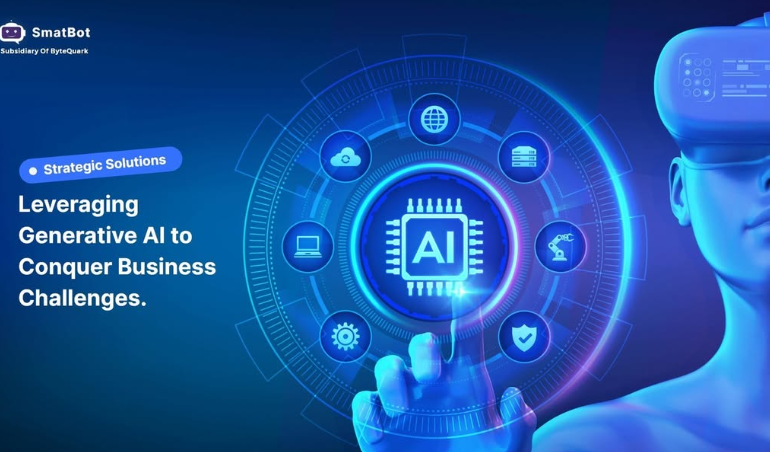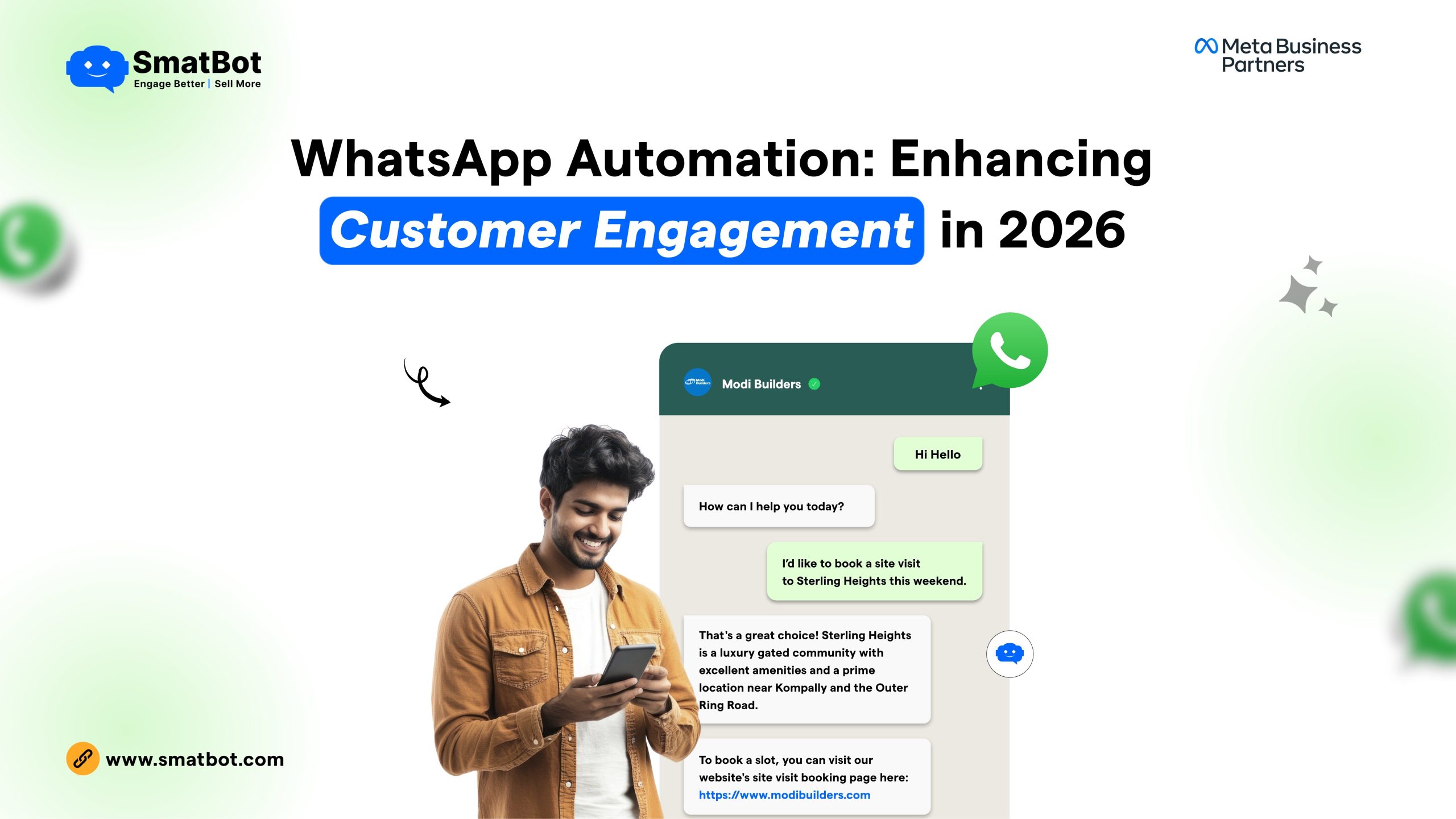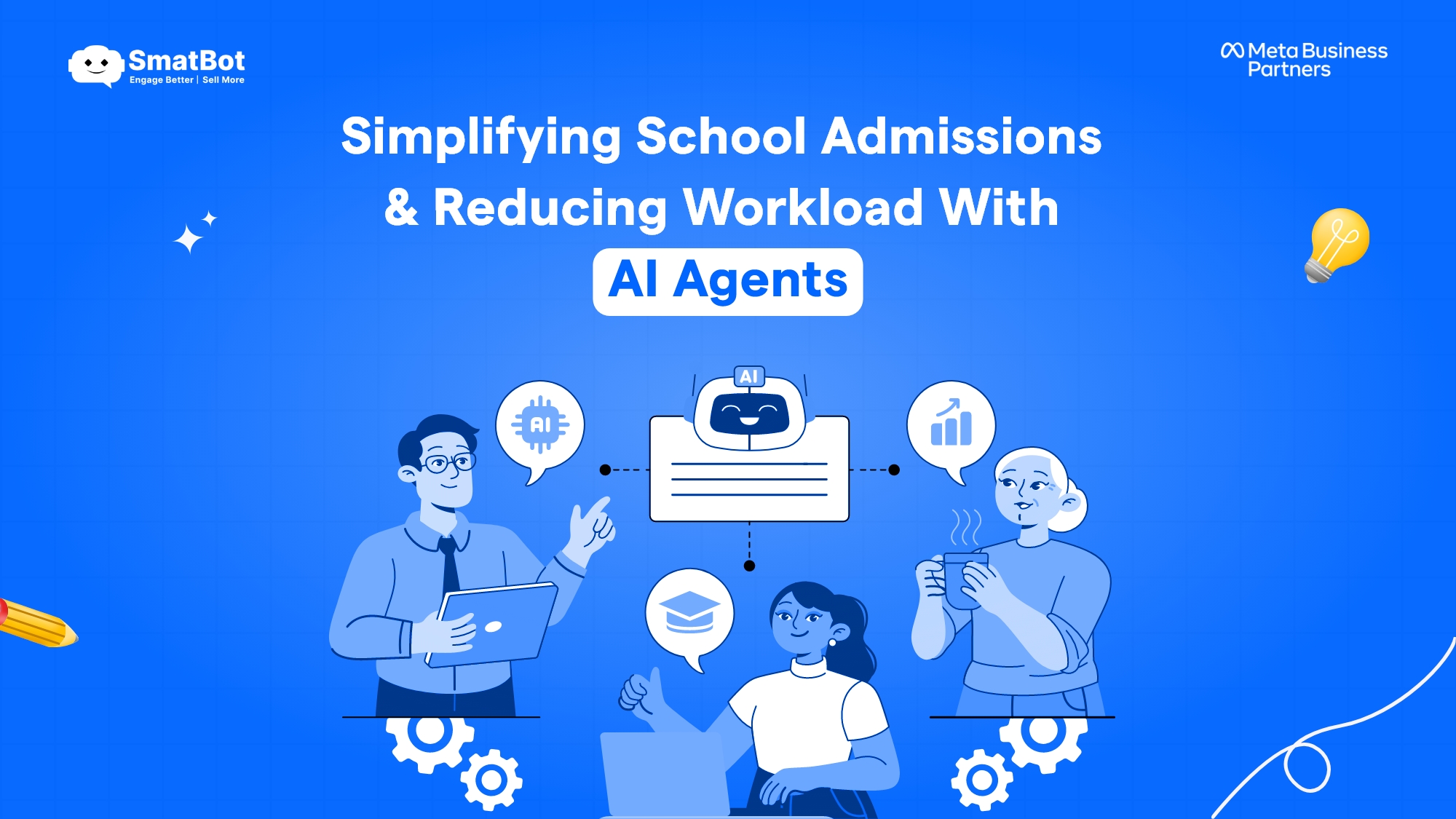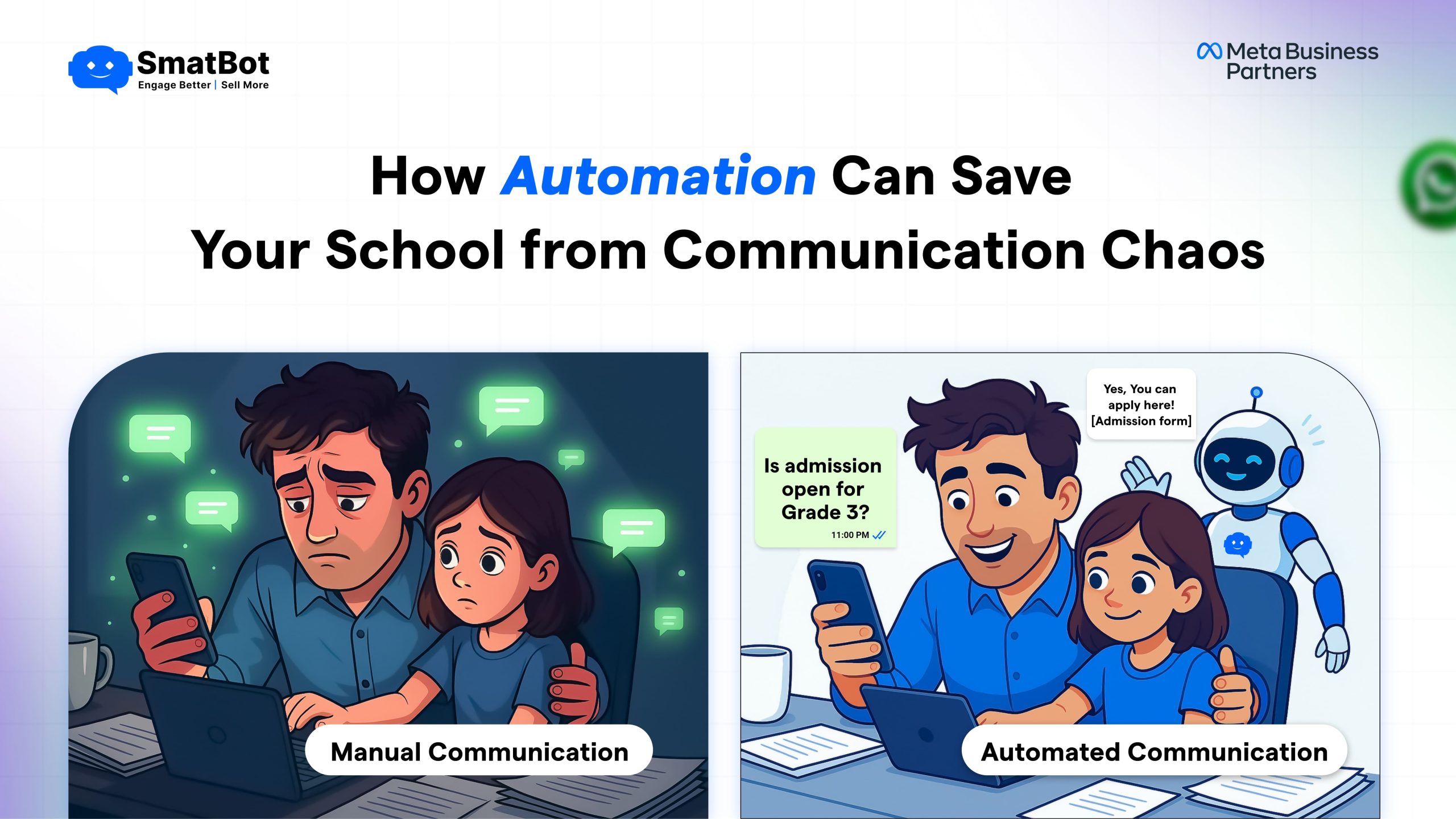Strategic Solutions: Leveraging Generative AI to Conquer Business Challenges

What is Generative AI and What can it Do?
Generative AI is a term provided to a subset of AI machine learning technology that has the ability to create content in response to the text prompt. It can range from short and simple to very long and complex. Outputs and inputs to these models may include music, images, text, 3D models and other types of data.
One of the most appealing characteristics of Generative AI is its capability to produce unique and tailored outputs for different industries.
For instance, Generative AI can be employed in the fashion industry to design unique clothing styles.
Now, let’s see what this powerful technology can do.
Generative AI can help in three main ways:
- Creating unique and new outputs like video ads or designing novel drugs.
- Automating repetitive manual tasks like coding or writing emails.
- Customising content and data to intended audiences with the help of chatbots for personalized customer experiences or performing targeted marketing based on customer behaviour.
In short, Generative AI excites businesses by automating knowledge work which is traditionally difficult to automate.
Types of Generative AI Models
There are several types of Generative AI models each with its unique features and uses. The list of the top types of Generative AI models are listed below:
- Generative Adversarial Networks (GANs)
Generative Adversarial Networks consist of two neural networks: The discriminator and the generators. Both compete against each other in a game-like setup.
The generator generates synthetic data like audio, image and text from random noise. Whereas the discriminator distinguishes between fake and real data.
In addition, the generator focuses on creating increasingly realistic data to deceive the discriminator, while the discriminator improves its ability to differentiate real from generated data. This competition empowers GANS to produce highly realistic output. These networks are trained simultaneously through adversarial learning.
Generative Adversarial Networks (GANs) don’t involve human interactions and enable application in numerous domains like data generation, art generation and video enhancement for training purposes. They are broadly used in areas such as image-to-image translation.
- Recurrent Neural Networks (RNNs)
Recurrent Neural Networks (RNNs) are a neural network type that processes sequential data like time-series data or natural language sentences. The network can be used for generative tasks by predicting the next item in a sequence based on the previous element.
However, RNNs are limited to generating long sequences because of the vanishing gradient problem. Long Short-Term Memory (LSTM) and Gated Recurrent Unit (GRU) are more advanced variants of RNN that have been created to address this limitation.
- Variational Autoencoders (VAEs)
Variational Autoencoders (VAEs) are another Generative model type that develops new data by sampling from a learned latent space after encoding entered data into a lower-dimensional space. It later decodes it back to reconstruct the input. This model is a combination of the abilities of autoencoding and probabilistic modelling to get a compressed data representation. With practical applications spanning various domains such as image generation, data compression, anomaly detection and more, VAEs exhibit versatility. In addition, these models are applied to data production, representation learning and compression issues.
- Transformer Model
The transformer model is another famous neutral network specially designed for subsequent data processing. They use attention mechanisms to model the relationship between different elements in sequence effectively. Furthermore, these models are parallelized and can handle lengthy sequences. It makes them ideal for creating contextually and coherent relevant content.
- Large Language Models (LLM)
LLM is one of the well-known types of generative AI that can produce content on a large scale. These models are used in different tasks such as answering user queries, writing essays and creating conversational agents.
What Challenges Do Generative AI Solutions Solve for Businesses?
As mentioned above, Generative AI has the potential to solve complex business problems in every industry. The following is a list of the top challenges that Generative AI solutions can solve:
- Expediting Product Development Process
Generative AI has become a tool for expediting the product design and development process. Businesses can effectively explore an extensive design space by harnessing algorithm power. It generates and literates numerous design options.
In addition, companies can push the boundaries of creativity because they can produce distinct and user-centric designs by using Generative AI that captivates customers. This facilitates rapid market entry and locates businesses at the forefront of their respective industries. The ability to continuously launch and refine products in response to evolving customer requirements boosts brand loyalty, establishing a competitive edge in the product design and development landscape.
- Efficient Handling of HR process
Generative AI tools can significantly support HR functions. These tools can automate repetitive HR tasks while giving precise and instant responses to staff queries through natural language processing and machine learning methods.
Companies can use Generative AI to develop virtual assistant HR. This virtual assistant can assist employees with tasks like instructing new employees, providing benefits details and handling leave requests.
Moreover, Generative AI solutions can also find qualified employees for vacant positions and schedule interviews to back up skills by analyzing resumes and job descriptions.
- Boost Sales
Sales are the business’s primary concern and generative AI has the potential to boost sales. In order to increase sales, this technology can make personalized product descriptions based on customer’s preferences. It analyses customer data and behaviour carefully to generate unique and personalised product descriptions.
Other than this generative AI can help businesses set the best prices for their products or services. It does this by looking at market trends, how customers behave and what competitors are charging.
Generative AI can also help businesses with customer segmentation and targeted marketing. By analysing customer data, it finds patterns and creates campaigns that appeal to different customer groups.
Furthermore, it is also useful for sales training. It makes a personalized training program for each salesperson based on their strengths and weaknesses.
In short, generative AI works in different areas to boost business revenue.
- Seamless Customer Service
Generative AI tools like SmatBot enhance customer service by offering prompt and accurate responses to customer’s inquiries. These tools also provide personalized recommendations based on customer preferences. For example, retailers can integrate SmatBot which can assist customers with product searches, order processing and issue resolution.
Similarly, healthcare providers can also deploy AI chatbots for appointment scheduling and resolving medical-related inquiries. This improves overall operational efficiency and patient care.
Real World Examples
From generating text to making videos, real examples of Generative AI are everywhere. Below, I am sharing the top real world examples of Generative AI.
- SmatBot: SmatBot is an AI chatbot-building tool that improves customer service by streamlining workflows and providing customer support across multiple languages and channels. Our platform leverages generative AI to enhance language understanding, user experience and document summarization abilities. With GPT integrated into databases, websites and knowledge base documents, users can ask their queries and get tailored responses quickly.
- SkinVision App: This Generative AI tool is for the early detection of skin cancer. With its regulated medical expertise, expert input and AI technology, the app teaches users to understand risks, self-examine and address immediate issues.
- TripNotes: TripNotes is a data-powered travel planner that simplifies trip planning. Users can paste their travel inspiration from social media or blogs to the app. The app then automatically researches and saves each mentioned place using Generative AI.
Potential Industries That Can Leverage the Power of Generative AI
Generative AI has become an integral part of the world. The technology is used in several industries across the world. The following is a list of potential industries that can leverage the power of Generative AI:
- Healthcare
The healthcare industry is going through robust changes with the help of Generative AI. Many healthcare companies are currently using this technology in numerous ways. For instance, Generative AI can be used by physicians to develop custom care plans for patients.
Generative AI offers groundbreaking solutions for treatment planning, drug discovery, diagnostics and more which enables healthcare providers to give more efficient healthcare services to unprecedented levels.
- Agriculture
Generative AI helps farmers by resolving their queries in real time and providing actionable advice for pest control, crop management and best agriculture practices. This technology enhances sustainability and productivity in farming.
- Entertainment
There is a noticeable shift toward more interactive and immersive content. As our attention span diminishes, innovative content formats are surfacing to captivate audiences like concise tweets, creative reels and engaging TikToks.
Generative AI is playing a transforming role in the production process. It democratizes creativity and empowers people to generate a wide variety of content including articles, music, images, and videos.
- Financial
The finance industry is harnessing the power of generative AI. From customer service automation to risk assessment and fraud detection, this technology enhances risk management, operational efficiency and customer engagement.
Moreover, it carefully analyses financial records, credit history and various other factors to evaluate creditworthiness and predict potential risks. This helps banks make smart loan decisions, speed up the approval process and reduce financial losses.
- Education
Generative AI can be used to develop custom learning plans for students based on their grades and overall understanding of several subjects. This technology can also support students with complex assignments such as term papers by being a starting point for brainstorming. For busy educators, Generative AI holds promise for simplifying complex tasks like outlining assignments, building lesson plans, giving innovative teaching assistance and more.
Closing Thoughts
Generative AI is an innovative part of artificial intelligence. This technology has the enormous potential to solve several business challenges such as accelerating product development process and fraud detection. It is changing many industries from healthcare to entertainment. Businesses and professionals must adapt to this new technology for efficiency and creativity.
SmatBot specializes in various AI and ML technologies and provides innovative solutions to automate manual tasks, address business challenges and enhance customer experiences. We excel in implementing AI and ML into existing applications.
By focusing on scalability, security, analytics, multi-platform integration and machine learning, we ensure our solutions meet the specific needs of each business. We work with various sectors like Agriculture, Education, and Finance to create high-quality products aligned with their goals.
Are you ready to unlock the power of Generative AI for your business? Contact us today to discuss how our expertise in AI and ML solutions can help you achieve your goals.




